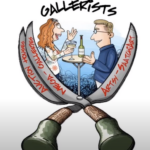
Author Archives for AndrasAdmin


How does science end up in a museum of contemporary art?
Leave your thoughts <p>On the occasion of the exhibition BARABÁSILAB: Hidden Patterns. The Language of Network Thinking at the Ludwig Museum in Budapest, this virtual event features Media an unusual exhibition tour, dissecting the connection between art and science with Albert-László Barabási, András Szántó, and museum director, theoretician and media artist, Peter Weibel.</p>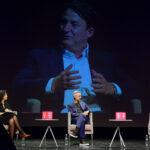
Aesthetics of Network Research with Albert-László Barabási and Nóra Winkler
Leave your thoughts <p>How can social and cultural phenomena be examined from the approach of network thinking? Can these relationships be visualized? While illustrations of scientific research certainly have an aesthetic dimension, the question may still arise in many, yet how can network science get into the museum András Szántó speaks with Nóra Winkler and Albert-László Barabási on this and more in this talk hosted in Hungary.</p>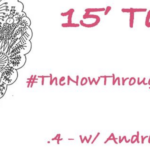
The Now Through Art Lenses
Leave your thoughts <p>In this episode of 15′ Talks #TheNowThroughArtLenses by Bocconi Students Arts Society, András Szántó was interviewed by Giada Tagliabue and Federica Profeti about the situation and the problems the art sector is currently facing.Conversation | 2020 | </p>
Talking Virtual Reality: Recreating the Museum Experience
Leave your thoughts <p>New-media art has been a rapidly developing field, embracing extended reality (XR), VR and AR as well as internet-based work and generative art. The lockdown has encouraged greater audience exploration and sharing of screen-based works of art. Nevertheless, the perception remains that new-media art is difficult to display, collect and maintain. András Szántó discusses this and more in this online panel, presented as part of Art + FinTech 2.0, which aims to uncover, examine and debate the new age of digital disruption and innovation in the wake of the covid-19 pandemic.</p>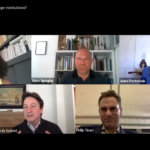
How will the Pandemic Change Institutions?
Leave your thoughts <p>The Covid-19 pandemic has confronted museums with questions ranging from the practical to the existential. What role should museums play in a time of crisis and recovery? How to welcome visitors safely? What are the changes needed for these institutions to stay relevant and sustainable in tomorrow’s social and cultural landscape? András Szántó joined Anne Pasternak, Philip Tinari, and Dr. Zoé Whitley for a discussion on these important questions moderated by Art Basel’s Marc Spiegler.</p>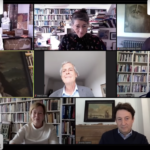
Technology & the Future of Museums
Leave your thoughts <p>The role of the museum as a repository of physical objects that give access to collective memory is changing. New digital recording technologies that, among other things, allow exact facsimiles to be made, are providing access to a global audience, while new display technologies are inviting us to look at the nature of the object with new eyes. This panel, presented by the Art Newspaper and Factum Foundation with Il Giornale Dell’Arte, discusses the purpose of a museum, its role, what should it show, how and to whom. It will look at the way technology is making a ‘museum without walls’ possible and realigning the relationship between the original and the authentic.</p>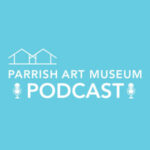
András Szántó and Terrie Sultan discuss the reopening of museums
Leave your thoughts <p>In this conversation for the Parrish Art Museum podcast, Director Terrie Sultan speaks with András Szántó about the critical need for the arts in periods of crisis, a practical plan for the reopening of museums, and the long-term changes in their role and function.</p>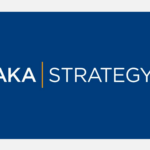
Arts and Strategy: Reflections on Cultural Planning in the Modern University
Leave your thoughts <p>In this article for AKA | Strategy’s annual Strategy Matters publication, András Szántó explores how strategic planning in arts and culture is a bit of a tightrope act: it demands a deft balancing of continuity and change, inclusiveness and decisiveness, passion and reason.</p>
“As Digital Discourse Turns to a Din, Art Critics’ Clarity Will Be More Essential”
Leave your thoughts <p>Few professions have been as deeply disrupted by modern technology as journalism. Yet, as Mary Louise Schumacher writes in ArtNews, more people are writing on more platforms and from more points of view than ever. A “generational shift” has left the field of art criticism with “more women, more critics of color, and writers from a wider range of purviews.” And, “despite all the downward pressure on the media industry, our digital era has inspired an artistry in criticism itself.” Schumacher’s findings are based on a survey of 300 writers which replicated a groundbreaking 2002 study overseen by András Szántó while he was at the helm of the National Arts Journalism Program at Columbia University.</p>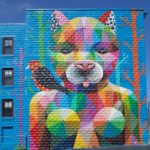
Completion of PUAM Strategy
Leave your thoughts <p>Over the course of 2019, András Szántó LLC, in collaboration with The Art of Change, undertook a comprehensive visioning and strategic planning process to define the evolution of the Punto Urban Art Museum (PUAM). PUAM has been working to break down invisible but undeniable socio-economic barriers around the low-income Point Neighborhood in Salem, MA through a range of cultural activities and programs. The planning process mapped the universe of like-minded initiatives, undertook extensive research and local community engagement, and mapped out an ambitious strategy to help ensure to sustainability of the cultural initiative and embed it into its parent organization’s long-range plans.</p>